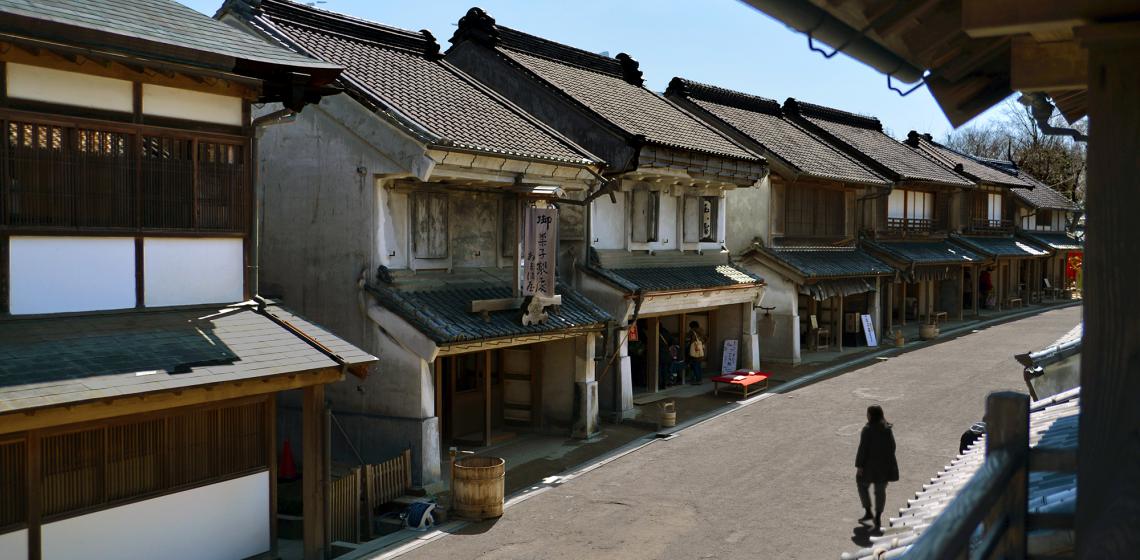
Boso-no-Mura (房総のむら, Bōsō no mura, "Boso Village") is a place that tells of the history and culture of Japan, and of its disappearing heritage. Set in a splendid natural environment, you can enjoy a hands-on experience learning about the changes that have occurred in clothes, food, housing and crafts over the ages from prehistoric times, as well as the traditional lifestyles of the people of the Boso region. Walking around the splendid natural environment of the museum, you can have hands-on experience learning about the changes that have occurred in the clothes, food, housing and crafts of our ancestors from prehistoric and ancient times up to the present.
The Boso-no-Mura complex features the “Fudoki-no-Oka Area” where you can learn about history and nature, and the “Furusato-no-Waza Arts and Crafts Area” which features reproductions of the houses of farmers and merchants.
Fudoki-no-Oka History and Nature Area
The Fudoki-no-Oka Area, which covers 32 hectares (80 acres), contains the entirety of the Ryukakuji burial mounds, one of the largest groups of burial mounds in Chiba Prefecture. The name refers to the geography and culture of the region. Here you can visit a museum, relocated as well as reconstructed cultural heritage buildings, etc., as you enjoy the beautiful natural scenery overlooking Lake Imba. Admission is free to all attractions
of Fudoki-no-Oka except the museum and the restored pit dwellings. The pit dwellings are reproductions of the Yayoi and Kofun Periods. Houses in those times were semi-underground, square structures with a primitive stove inside.
Furusato-no-Waza Arts and Crafts Area
This area features reproductions of the houses of merchants, samurai, farmers, etc., as well as landscapes and environments from the late Edo Period to early Meiji Era (1800s). This area is not merely exhibits of buildings and furnishings, it is also a place where you can use your five senses to experience traditional crafts and lifestyles from long ago through demonstrations and hands-on interactions. Using references such as the street layout of part of Katori City, precise reproductions have been re-created of 16 merchants’ houses, the Fusaya Information Center, a shrine and a fire watchtower – all common sights in old towns.
There are about 350 types of demonstrations and hands-on experience programs that are offered during the year, including pottery making, making amber beads, making magatama, comma-shaped yin and yang beads, plaiting (straps, key holders), making a pocket knife, paper making, making a boshu round fan and much, much more.
Photo by Kunitaka NIIDATE, CC BY-SA 2.0, https://commons.wikimedia.org/w/index.php?curid=32036164
Text source: Museum Brochure (PDF)
